Next: July 22 and 23 - Nickerson
We drove the short distance from our campground in Rhode Island back into
Connecticut to see Mystic, and somewhat by chance ended up at "Mystic
Seaport", an outdoor living history museum recreating and interpreting this
19th century seaport, including several tall ships you will see
later. Our only sensible admission choice was the "Family
Membership", which gives us the ability to return for a full year -- not
likely, but it was cheaper than 4 individual one day passes.
So, armed with our guides and maps, we set off on a gorgeous day for a tour
of the seaport and environs.
Below I caught the girls sitting in a space in the deck railing on the first
tall ship we toured. We came to this boat to see the "Capstan
Demonstration". Since none of us had a clue what a Capstan was, we
went, and found out.
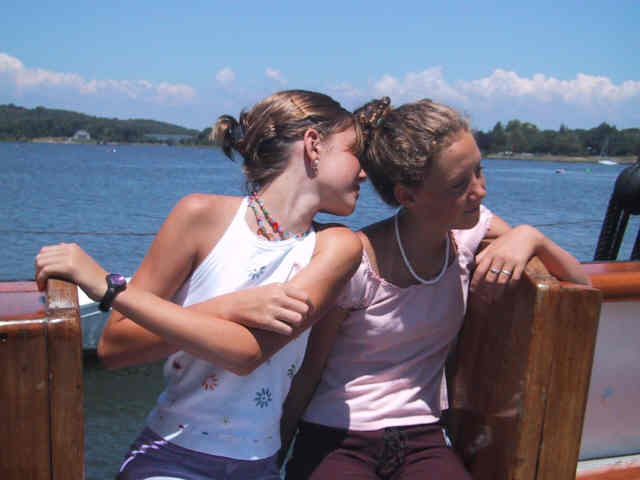
Here Jody demonstrates the Capstan, which is the large gear-like wheel they
are all turning. This thing served as a winch, and was used to raise and
lower heavy loads -- like anchors -- from this ship in those days before the advent of cranes.
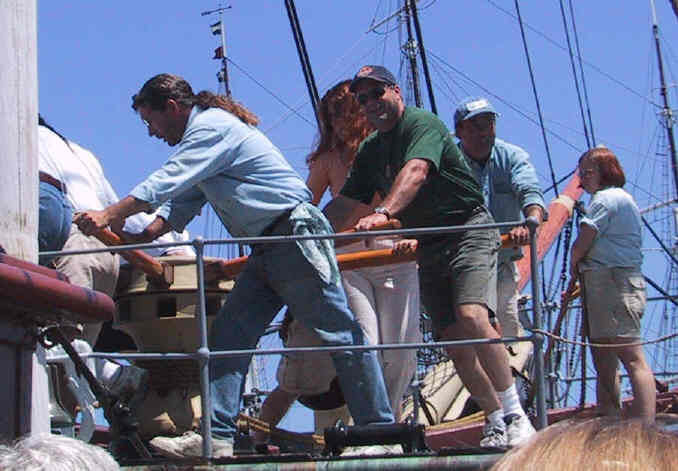
Jordan watches her mom do some serious heavy lifting. Her 'do' that day
was courtesy of her sister. Photo by me.

The photo below is of a 'Catboat', which was a popular design around the turn
of the last century. Originally a work boat, they were adapted to a
variety of uses, including racing. The girls just loved them. They
are a bit bathtubish and thus slow, but that also makes them stable in the
water.
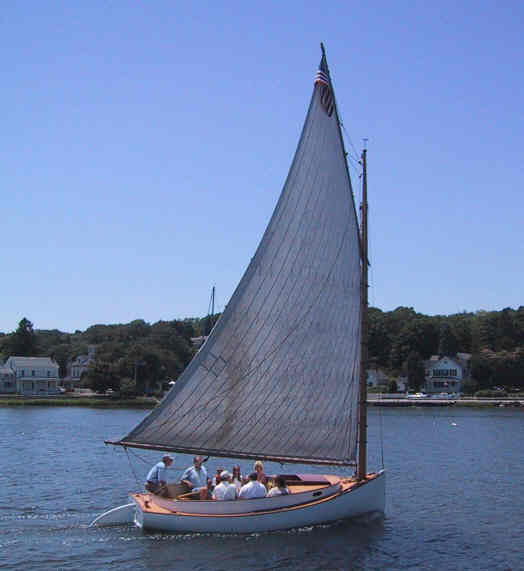
The larger tall ships used miles of rope. It was usually made locally
in a 'ropewalk', so called because in the days when rope was made entirely by
hand, the ropemaker had to walk away from a fixed end of his rope while he
twisted and braided -- and to make a long rope he had to walk a long
distance. To allow year-round ropemaking the ropewalks were eventually
enclosed, resulting in very long narrow buildings, like the one below only
longer -- only one fifth of the original building shown survived.
The odd looking machine on tracks below would automatically twist an
individual strand of rope from the hemp yarn made in another part of the
ropewalk; 3 of these rope strands were then themselves twisted to make a
rope. A 600 foot length was the standard.
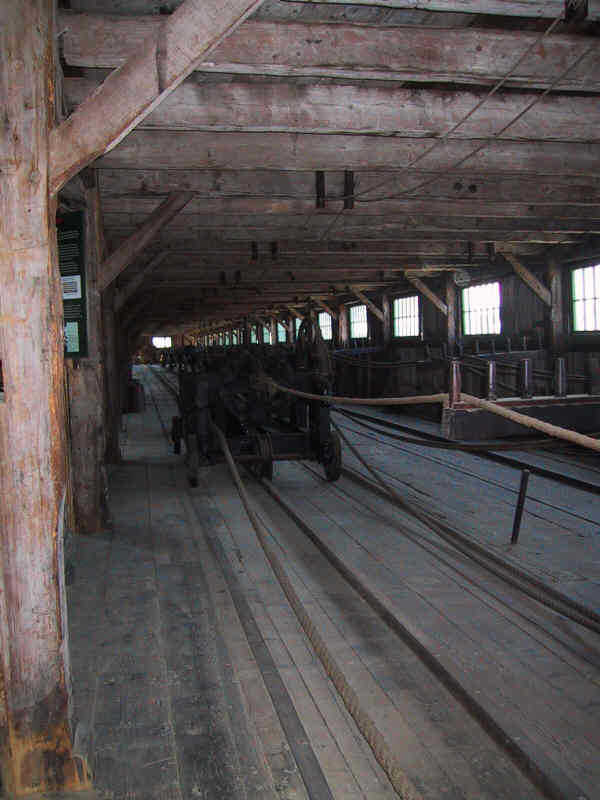
A youth boatwright class was in progress. With a parent, the kids were
building their own small plank boats in one weekend. We watched them work
for a half hour or so, and learned a bit about small boat building in the
process.
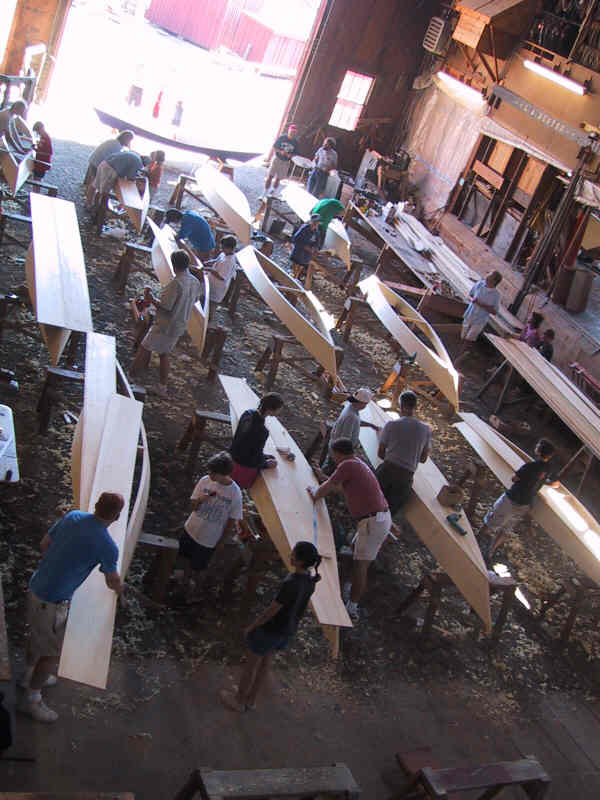
The ladies and gentlemen in the photo below are reefing the sail of a tall
ship. The sail weighted something like 800 pounds. It took 8 people
to lift the sail up and secure it in place on the 'yard'. This looked
incredibly difficult even when done while the boat was at dock. Normally,
one reefs a sail when the weather has turned so foul and blustery that the
rigging or mast is in danger -- so this process is done in a raging sea, with
the boat pitching wildly about. Not for the faint of heart, I imagine.
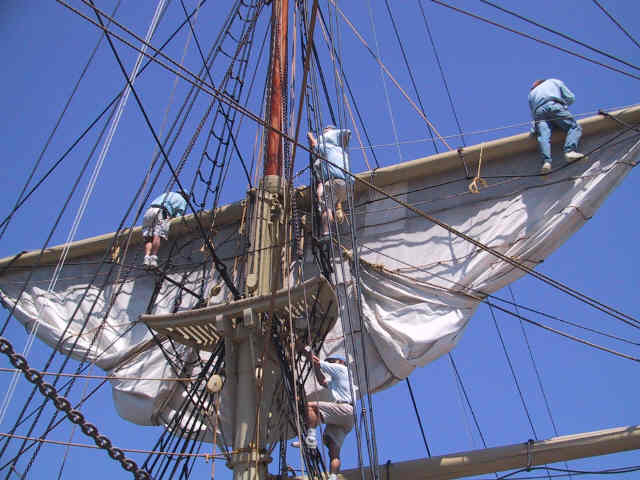
Jordan and I got to try reefing a sail under more benign conditions, as you
can see below. There were 4 of us lifting a sail that was only 4 feet long
-- a little tiny sail, perhaps one you might find at the very top of the mast of
these gigantic wooden ships. Even so, it was hard.
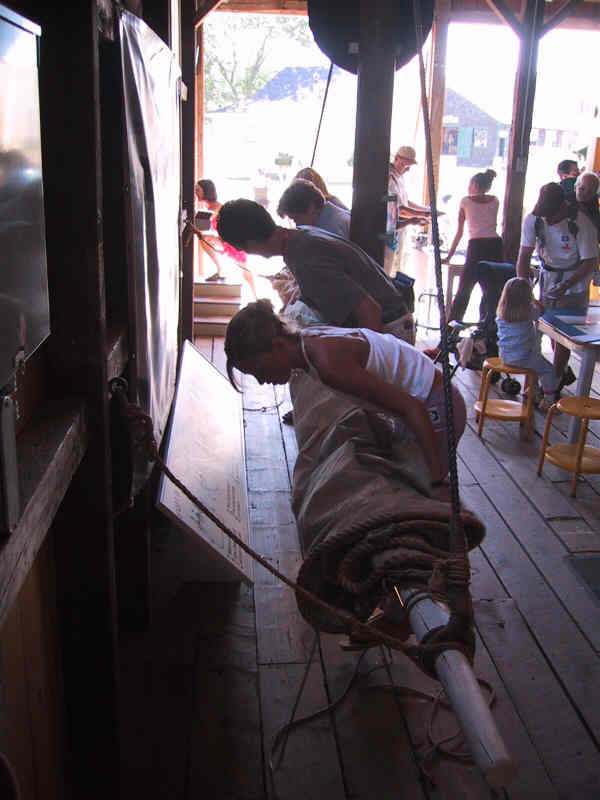
We also assembled a barrel from its component parts. This was really
tricky, and took 3 of us to get it right, although I am not at all sure that my
'help' was wanted or appreciated -- but I could not resist, as it was too much
like an engineering task, and I am drawn to such.
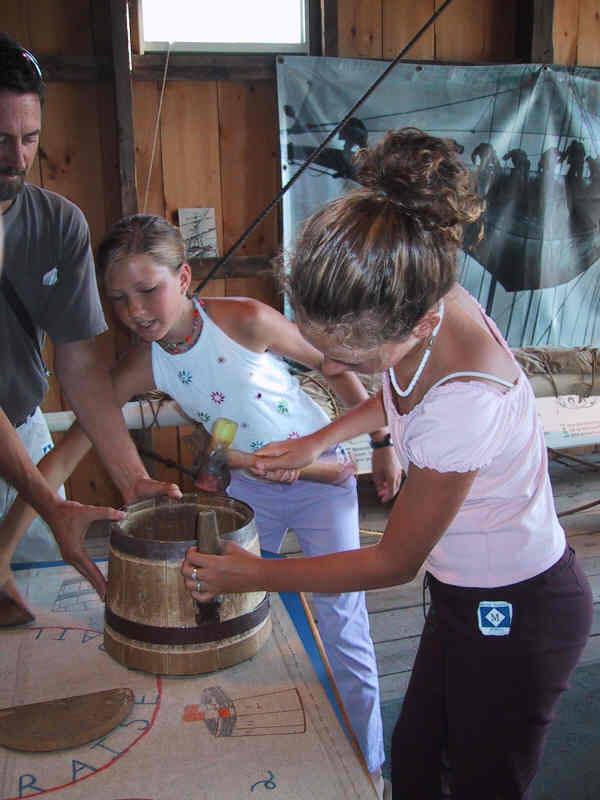
Below decks in the forecastle (pronounced foc-sil), where the crew slept --
those small spaces with curtains are bunks. The space was too small for
Joya to stand up -- you can imagine my discomfort. An entire year living
in such a space would drive me over the edge (literally) I am sure.
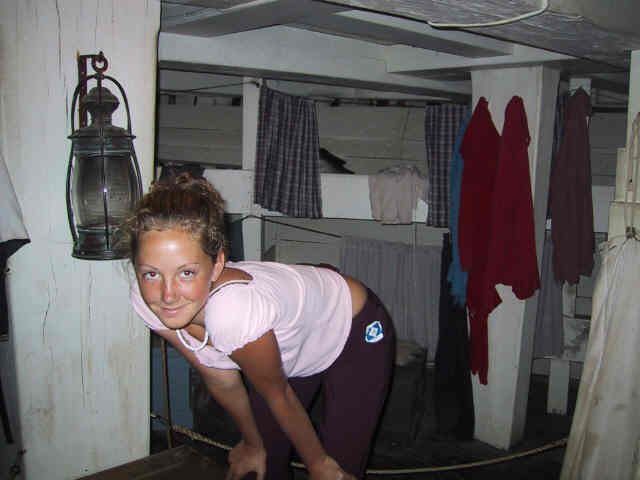
This is a whaler -- the last original wooden whaler left in the world.
We learned quite a lot about the operation of a whaling vessel -- more than we
really wanted to know, I think. It was a beautiful ship, but seeing
pictures in the exhibits depicting the 'rendering' of a whale was
disturbing. This ship took over 50 whales on its first voyage -- and all
they brought back was whale oil. Everything else went over the side of the
ship. One voyage they got over 70 whales.
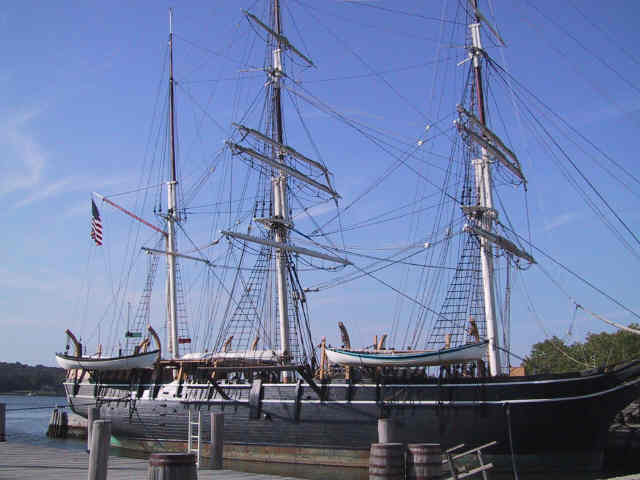
At the end of the day we practiced playing with 19th century toys. The
girls each worked their hoops in their own ways.
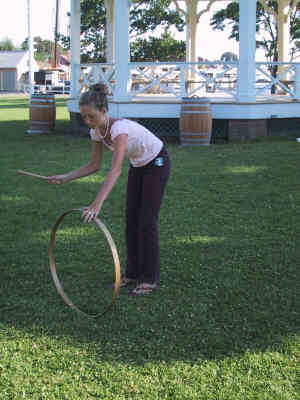
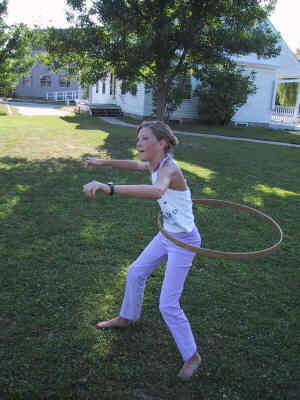
We enjoyed our day in Mystic, although one day was enough for all of
us. We had brought our laundry with us, and so at 6 PM set out to locate a
laundromat, which we found, of course, in the outlet mall nearby. It was
run by a very heavy and sweaty woman who worked incredibly hard, this being an
East coast laundry where one always had the option of having someone else wash
and dry your clothes for us. We got everything washed successfully, but
were having a hard time with drying. The circuit breakers kept popping,
which elicited a curse from the heavy laundress, who then had to tromp into the
raging heat of the boiler room to reset the breaker. Apparently none of
the breakers were labeled, since each time she departed all the laundry patrons
sat patiently and watched, bemusedly, as the lights, washers, dryers and other machines went alternately
off and then back on. Loads of fun.
July 22 and 23 - Nickerson
![]()